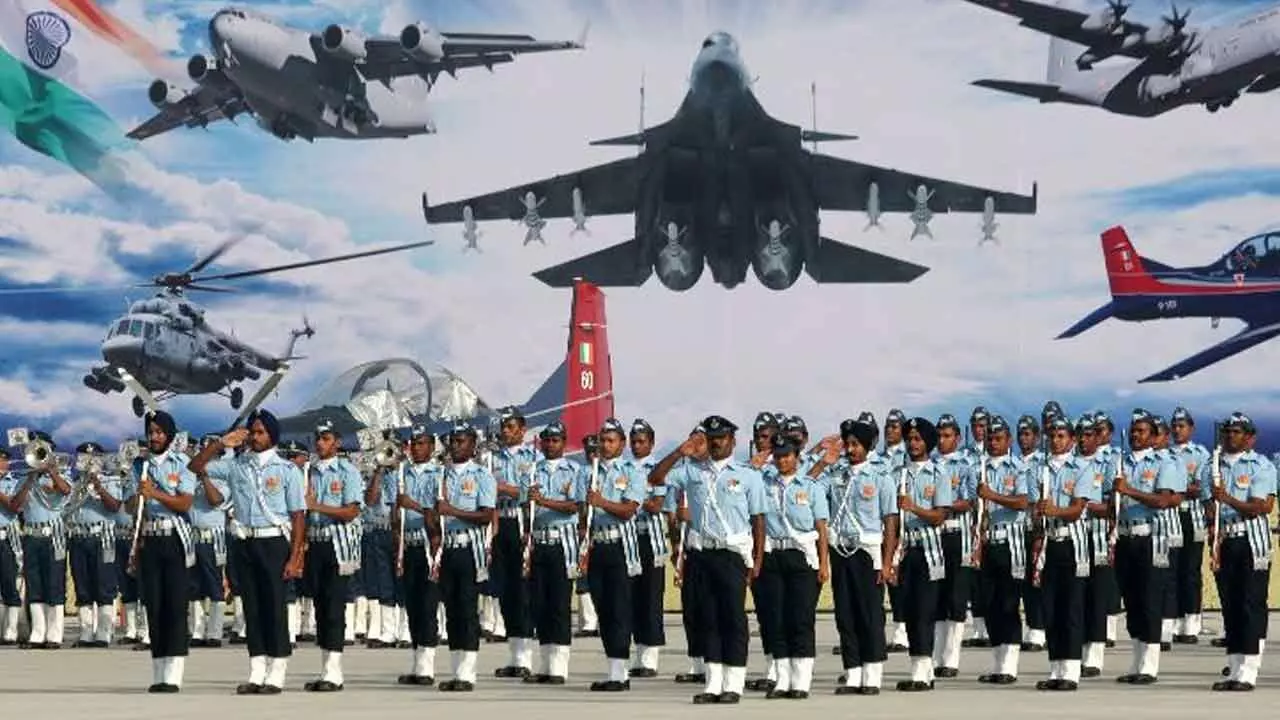India’s Airpower Needs More Than Aircraft—It Needs Aerospace Vision
To ensure national security, economic growth, and regional influence, India must bridge the divide between civil and military aviation with a long-term aerospace strategy
India’s Airpower Needs More Than Aircraft—It Needs Aerospace Vision

Civil aviation is a key element of a nation’s comprehensive air power, and India must realize the potential of collaboration in the defence and civil aviation industry. There are large areas of overlap between civil and military aviation in national security due to the interoperability of capabilities and capacity redundancies.
The aviation sector also has the potential to contribute to economic growth, foreign policy support, diplomacy, political support and signalling, and humanitarian assistance. India needs to develop a comprehensive and visionary aerospace technology development and production (ATDP) strategy that embraces public-private partnerships and invest heavily to make the aviation industry a profitable economic venture.
India’s aviation industry expects investments of Rs 350 billion ($4.99 billion) over the next four years, with the government planning to invest $1.83 billion for the development of airport infrastructure and aviation navigation services and build 220 new airports by 2025.
The country is already known for cost-competitive space research, development, and production. Expanding this model to an integrated military-civil aviation industry will be a truly strategic investment for the future, given the immense regional demand for affordable combat platforms, critical enablers, AD radars, weapon systems, aerial weapons, fixed and rotary-wing civilian passenger and transport aircraft, and unmanned platforms. This will not only fill inventory gaps but also expand regional influence by creating technology dependencies through generating extensive low-cost competitive exports.
The extensive use of air power in current conflicts underscores its continued relevance and expanding methods of use, such as in manned and unmanned platforms, diverse long-range precision weapons, hypersonic and advanced aerial missiles, sophisticated air defence systems, and surface and space-launched weapons that operate across the aerospace continuum. Air power is the essential, integrating thread in future multi-domain operations, connecting land, sea, and space.
With China remaining resolute in its pursuit of becoming a world-class military power by 2047 and asserting its role as the central global state, or Zhōngguó, it has strategically focused on advancing its air and space power capabilities, with its sixth-generation fighters already surpassing those of the US.
By 2025, the Indian Air Force (IAF) is expected to have a stronger, more diverse, and increasingly indigenous fleet. The IAF aims to boost its fighter strength by adding nine squadrons, incorporating a mix of imported and domestically produced aircraft.
Key developments include the retirement of older MiG-21 Bison squadrons, the development of the Advanced Medium Combat Aircraft (AMCA), and the increased emphasis on "Atmanirbhar Bharat" (self-reliant India) for defense manufacturing.
The Indian Air Force (IAF) envisions a robust future by 2030, focusing on increasing indigenous capabilities and modernizing its fleet to address regional security concerns. Key aspects of this vision include increasing indigenous content in manufacturing, achieving a squadron strength of 42, and modernizing its aircraft to counter potential threats from China and Pakistan.
The IAF is also involved in other programs, such as the development of unmanned aerial vehicles (UAVs) and the modernization of its helicopter fleet.
The count of IAF’s fighter squadrons has shrunk to 33 (a round 640 fighters) compared to a desirable strength of 42. The squadron strength is likely to come down to a mere 19 (around 380 warplanes) by 2027, as revealed in a Parliamentary panel report earlier this month.
The IAF is planning to induct a significant number of new aircraft, including the Light Combat Aircraft Tejas, Advanced Medium Combat Aircraft (AMCA), and potential foreign fighter jets.
The IAF is prioritizing its ability to respond to threats from China and Pakistan, focusing on air superiority and strike capabilities. The AMCA, a 5th-generation stealth fighter, is under development and aims to be a core component of the IAF's future fleet. The Government of India sanctioned $1.8 billion/Rs 15,000 crores for the Advanced Medium Combat Aircraft (AMCA) project in 2024, with the first flight planned in 2028 and production in 2035, 11 years from project commencement.
The Tejas Mk-1A, an indigenous fighter aircraft, is being inducted into the IAF to address fleet shortages. The IAF is planning to acquire 114 multirole fighter aircraft to enhance its capabilities.
The source said the IAF would get 120 Tejas light combat aircraft, another 120 twin-engine mediumweight aircraft to be built in India in collaboration with a foreign manufacturer, and an equal number of single-engine fighter planes. India is currently negotiating a deal with France for buying 36 Rafale fighters and 72 Sukhoi-30 fighters are on order. Bridging the capability gap is vital for the IAF that is saddled with ageing Soviet-era fighters.
Most developed nations across the world are developing sixth-generation fighter aircraft, with both the US and China having test-flown the initial prototypes. It is believed that the sixth-generation fighter aircraft will be operational by the early 2030s.

